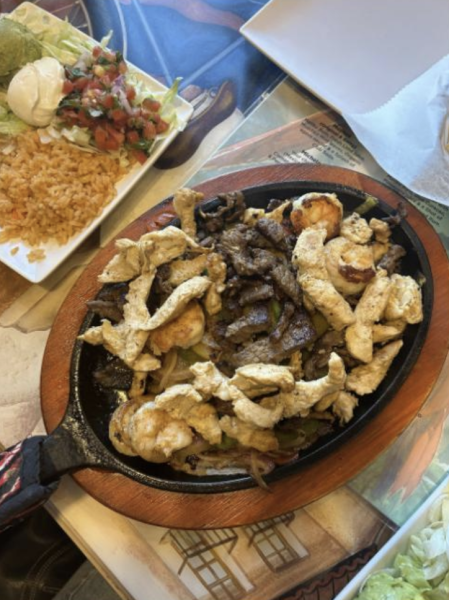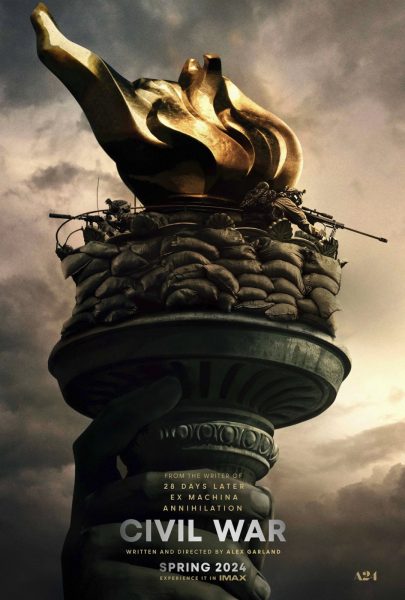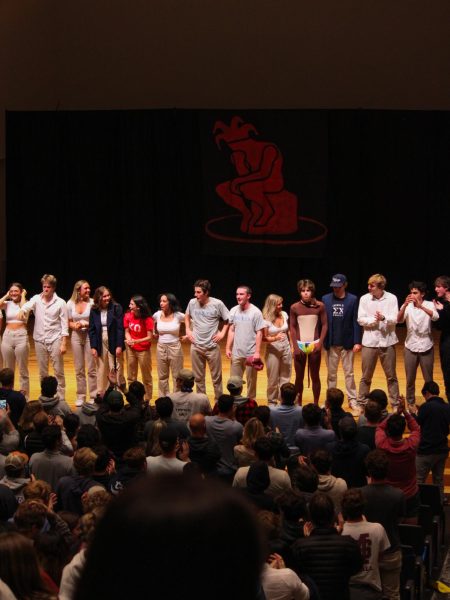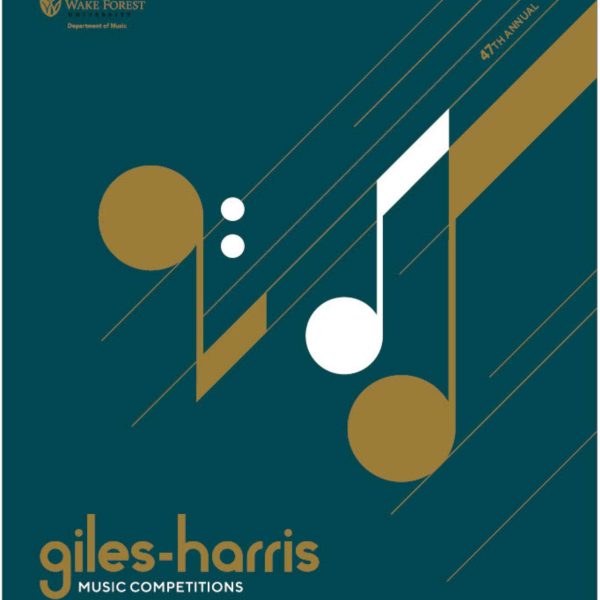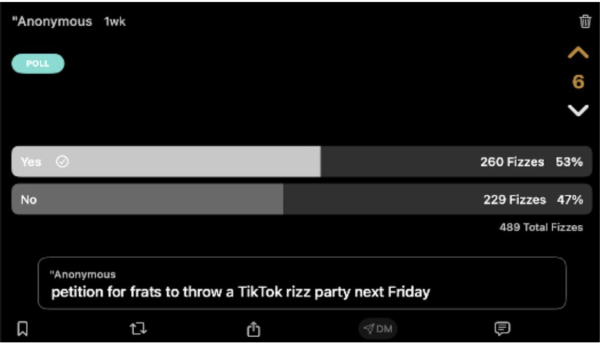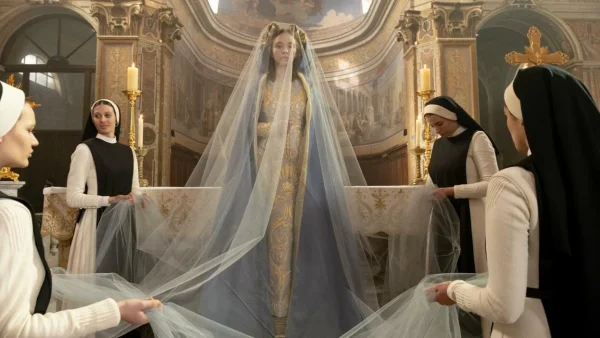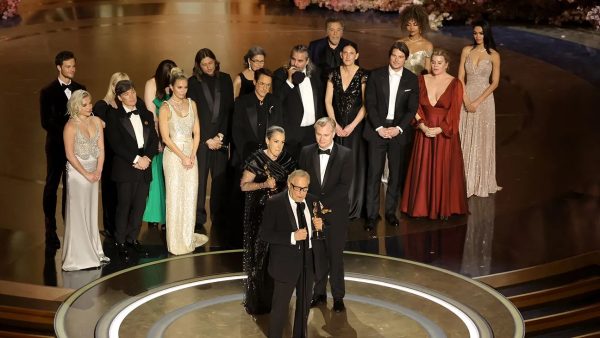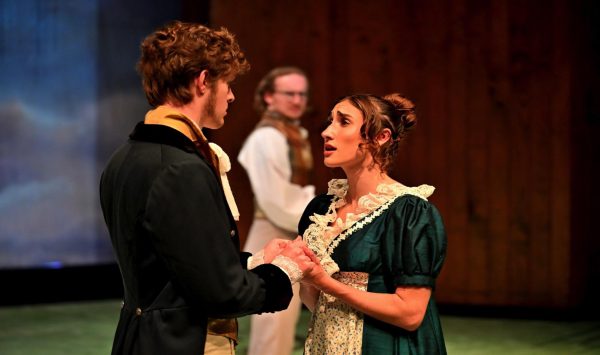“Means of Identification” exhibition opens
October 14, 2021
Every four years a select group of art students gets the unique opportunity to fly to New York City, walk the halls of the Whitney Museum, peruse artists’ personal studios and buy whatever fancies their eyes with university money. Oh, to be a part of that group.
This past semester, 13 lucky students were able to do just that. Well, sort of.
Due to COVID-19 precautions here on campus and in New York, the students were not able to visit the museums and galleries in person. This forced the group to adopt and utilize extensive research and virtual calls with the artists to decide which pieces would be added to the Student Union’s Collection of Contemporary Art.
“There were a lot of awkward Zooms where the gallery would [hold the computer up to the piece] and say ‘this is it,’” junior Lucy Owen said.
“We didn’t even get to see any of the pieces in person until August,” added senior Maddy Barnick. “I just showed up to work at the gallery, and they were all here.”
Now, after months of discussion and anticipation, nine new works hang in the Hanes Art Gallery in Lower Scales as a part of the “Means of Identification” exhibition. The only stipulations to being a part of the collection were to be “of the times” and to fit within the group’s $102,000 budget.
“Paintings are very expensive,” Barnick said. “So we looked at a lot of things that have craft and a lot of tactile works. We looked at huge wall mounts of sewing and of mixed medium because we wanted something that was going to really stand out in our collection.”
Whether it’s the size, color or the story, all of these pieces stand out in one way or another. Even their intangibles. As we were walking around, Barnick and Owen often repeated that every piece was purchased for far less than its actual value.
“This piece we got for a steal,” Barnick said. “Then [the artist] went to auction after we purchased it and one of his works sold for an ungodly amount of money. So, we technically don’t know how much this piece is currently worth.”
The piece Barnick is referring to is Salaman Toor’s “The Meeting”, a small wooden painting the size of a dinner plate. Its layered brushstrokes, absinthe green tint and voyeuristic portrayal of two men flirting in a bar — a concept exceptionally foreign at the time of consideration — made this piece one of the fan favorites.
Four of the pieces, including Toor’s, were created during the height of the pandemic. Each represents different experiences and identities the artist explored during quarantine.
For example, the collection’s largest piece, “Tapestry of My Soul” by Winston-Salem native Rashaun Rucker, is a print of many intimate images in Rucker’s life quilted together. Using religion, nature and family, Rucker allows us to see what he has deemed important and beneficial to his life in a positive and celebratory depiction of an American Black man — one that hadn’t been so prevalent over the previous 18 months.
Every piece in the collection expresses some sort of timely take on current politics or social issues, which differentiates the works from what some people consider contemporary art.
“[All the artwork] has to do with contemporary subjects that we as a committee deemed necessary to talk about,” Owen said.
“And it was really interesting because, with the prompt ‘of the times’, we went a few months without defining what we wanted,” Barnick added.
The group, thankfully, was able to figure it out before the Feb. 19 deadline the studios and New York City galleries had imposed.
Many of the pieces purchased focus on identities that differ from the cis, white, rich, male identity that current American society favors. This led to the decision to name the exhibit “Means of Identification”.
Once the exhibition in Scales closes on Dec. 10, those nine works will have a few possible fates — be hung around Benson, sent to other exhibitions or, sadly, packed into storage.
“We are wary of putting some of our more expensive [“Thandiwe I, Roanoke, Virginia” by Zanele Muholi] and tactile [“In One Fell Swoop” by Suchitra Mattai] pieces in a space that is not well monitored,” Owen said. “We don’t have the resources to properly take care of the art. The art just sits in a crowded Benson area with natural light getting all over it.”
“The problem is that if we keep acquiring work, where are we going to put it?” Barnick asked. “Half of this stuff will go into storage [and] some of it won’t be able to be seen because we don’t have the space [to properly display it]. Yet, there are so many great resources and so many great connections the art department has with huge galleries. And when these types of programs are pushed under the rug, this is what it amounts to.”
“We really need a permanent museum space to do our incredible collection justice,” Owen said. “Duke has the Nasher [Museum of Art]. We’d love to have something like that.”
Regardless of where the art goes, both students share one simple request.
“We really just want it to be seen,” Barnick said. “Specifically heard in the manner that it’s supposed to.”














